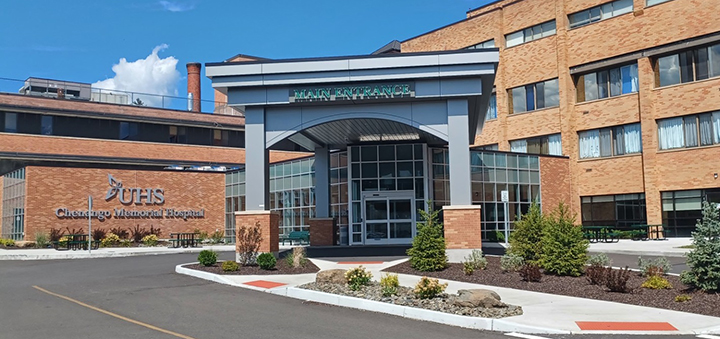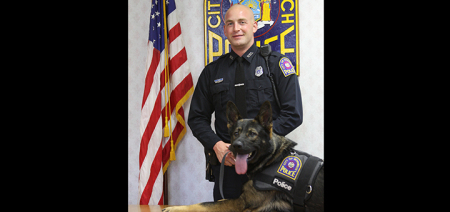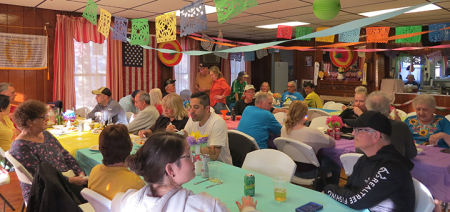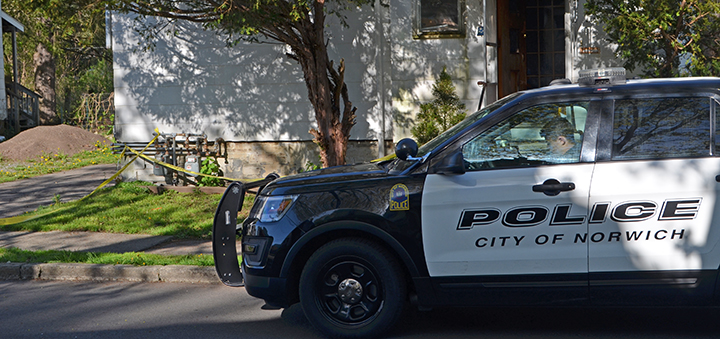UHS Chenango Memorial Proves To Be A Lifeblood Of Chenango County
Published:
February 8th, 2024
By:
Shawn Magrath
 UHS Chenango Memorial celebrated the one-year anniversary of its newly renovated emergency department and walk-in center in 2023, alongside the launch of phase two of its years-long multi-phase strategic plan to boost health care services and ensure operational and financial sustainability. (Photo from UHS Chenango Memorial Hospital)
UHS Chenango Memorial celebrated the one-year anniversary of its newly renovated emergency department and walk-in center in 2023, alongside the launch of phase two of its years-long multi-phase strategic plan to boost health care services and ensure operational and financial sustainability. (Photo from UHS Chenango Memorial Hospital)
NORWICH – Having wrapped up the first phase of its strategic Chenango Medical Neighborhood Plan, UHS Chenango Memorial Hospital (CMH) is moving ahead with phase two, its sights set on bolstering primary and specialty care in 2024.
UHS Chenango Memorial announced last year that it secured $20.6 million to forge ahead with its years-long multi-phase plan to reconfigure, redesign and redeploy CMH resources in a way that increases access to specialty care while ensuring continued access to essential services. The ultimate goal, according to UHS heads, is to boost services while assuring its viability as a rural hospital.
“Having flexible, modern space is important because it sets the stage for the high-quality care we strive to provide in all of our settings, whether it’s for hospital-based services or outpatient care,” said Chris Kisacky, vice president of service coordination and development at CMH. “Very importantly, it also helps us recruit and retain the medical providers, caregivers and other staff who are our greatest asset.”
CMH launched phase two of its plan in February, alongside the one-year anniversary of its newly constructed emergency department and walk-in center. The hospital also closed out phase one of its plan, which largely focused on ambulatory services.
“The capital improvements outlined in the plan replace aging and dysfunctional infrastructure with state-of-the-art, versatile and multifunctional spaces that may be reconfigured based on emerging needs and changing medical practices,” explained Kisacky. “This versatility improves the quality, safety and efficiency of care delivery and ensures CMH’s operational and financial sustainability.”
With phase two of its strategic plan now underway, focus has shifted from ambulatory care to primary and specialty care. And with that comes strategic staff shake ups. UHS CMH has appointed people to two critical positions in the past year: Sri Poranki, director of strategic initiatives; and Dr. Thomas Genese, vice president of medical affairs and community health.
The hospital looks to reach a milestone in phase two of its Chenango Medical Neighborhood Plan by late February, with the anticipated completion of its new outpatient laboratory.
But in spite of the optimism surrounding its strategic plan, UHS CMH faces an onslaught of challenges that are all too familiar to rural hospitals. Those challenges are expected to linger for years to come.
“Health care today exists in a constantly changing environment, and small rural hospitals like CMH must constantly adapt to changing regulations and reimbursement pressures – all while never losing sight of its mission to provide exceptional care to the community it serves.” said Kisacky. “These pressures were exacerbated by the COVID-19 pandemic, which stressed hospitals and health care systems – particularly rural facilities – even further.”
Amplifying the challenges of changing regulations and reimbursements for Chenango Memorial was a decision in January to close the long-term care unit on the hospital’s second floor, ending more than fifty years of assisted living services to Chenango County seniors. The hospital worked with the 19 seniors who called the unit “home” to ensure those people would have placements in other long-term care facilities.
“Providing the highest quality of care for our long-term care residents has been a point of distinction for our hospital for many years,” Dr. Drake M. Lamen, president and CEO of UHS Chenango Memorial Hospital, said in a statement when the decision was publicized late last year. Even so, long-term care is “outside of our core mission,” he added, and a slew of factors, including long-term care regulations, staffing shortages, and insufficient reimbursement rates contributed to a service that has “not been able to support itself financially for a number of years.”
“As a non-profit hospital, we can no longer justify allocating additional resources to sustain it,” Lamen said.
“Sharing the news with the residents and their families, as well as those staff members, was very difficult,” said CMH VP of Clinical Services David Finney. “We did everything that we could to ease the transition for them and to treat them with the compassion and respect they deserved throughout the process.”
Since the closure, all former residents of UHS CMH have found placement in a long-term care facility; and while some staffers have pursued opportunities elsewhere, the majority stayed with CMH and were designated to other areas.
“I am still in awe at the strength and compassion our staff showed for both the residents in their care and their colleagues throughout it all – and for the support and kindness they received from all of our hospital staff,” Finney said. “For me, this has been an example of the special culture we have here at Chenango Memorial. No matter the challenge in front of us, we rise to meet it for the good of our patients, colleagues and community. It isn’t always easy, but we’re committed to our mission of service.”
Attracting a qualified workforce has also been a challenge for CMH in recent years, placing it among the ranks of thousands of hospitals nationwide dealing with a shortage of healthcare workers. Consequently, CMH – following suit of other hospitals – has relied on outsourced labor to fill critical roles, including nurses and physicians, which in turn has added more than $5 million of unexpected expenses in 2023 alone, according to Finney.
“We don’t begrudge nurses who have the family flexibility and support structure to take on these ‘traveler’ roles – and we are grateful to those who have taken assignments here in Norwich because they’ve supported our ability to continue providing high quality care despite our vacancies,” explained Finney. “But this isn’t sustainable. It is the staffing agencies who are benefiting above all. FEMA funding was the only thing keeping many hospitals whole.”
In the hope of filling the gaps in the healthcare workforce, CMH is working closely with educational institutions in the area, including DCMO BOCES, Morrisville State College, Mohawk Valley Community College, Hartwick College, SUNY Broome, and Binghamton University. The hospital’s aim is to groom existing and potential employees for open positions, knowing there’s better chances of keeping people local than attracting employees from outside the area. The hospital presently employs roughly 380 full-time equivalent workers and an additional 102 workers through affiliated service contracts, making it one of Chenango County’s largest employers.
CMH is the sole hospital in Chenango County and operates the only emergency department, which sees an average of 18,000 visits each year. CMH also has five satellite offices in Norwich, Oxford, Sherburne, and Sidney, and maintains the only labor and delivery/maternity unit serving this rural region at its central campus in Norwich.
UHS Chenango Memorial Hospital is a member of United Health Services, a locally owned not-for-profit 916-bed hospital and health care system serving the Greater Binghamton region from more than 40 locations around New York’s Southern Tier.
Author: Shawn Magrath - More From This Author
Comments






